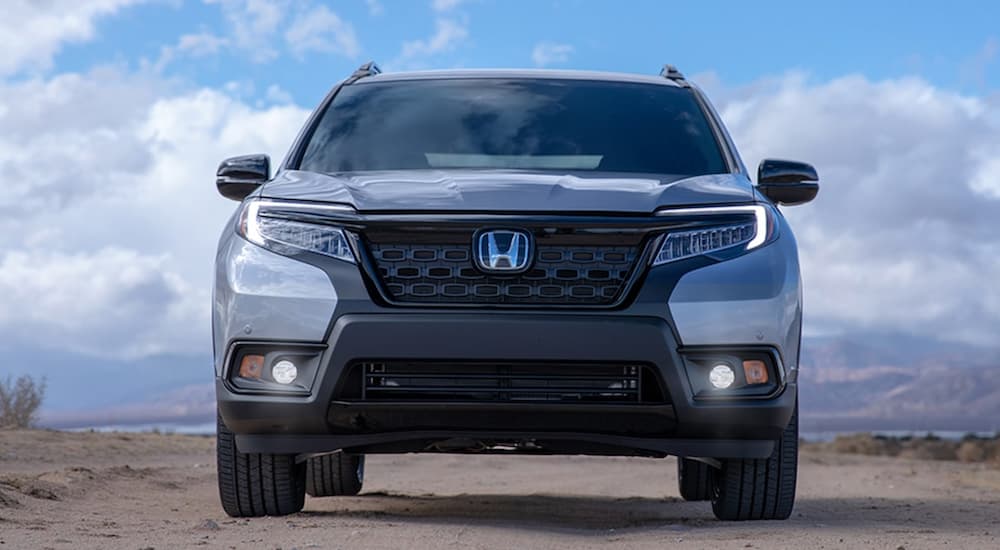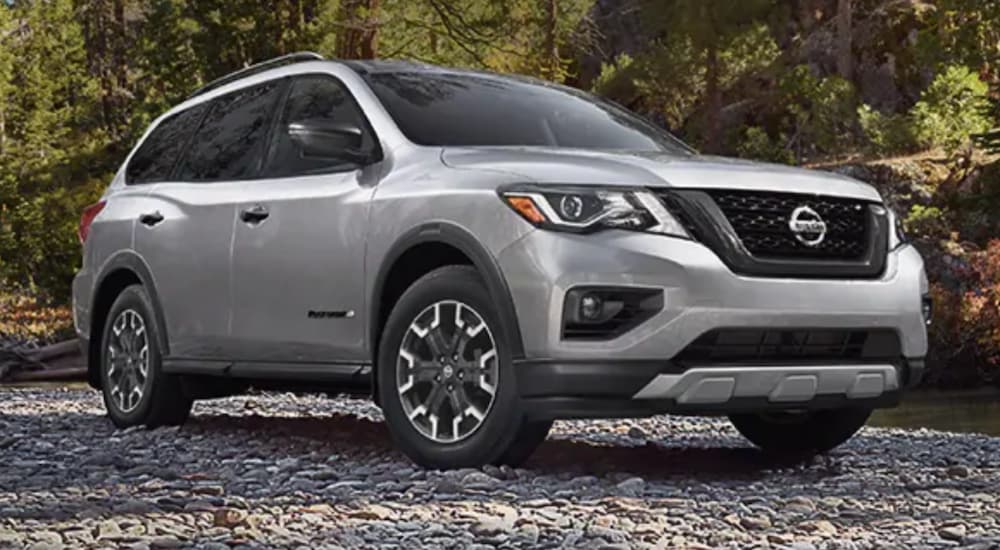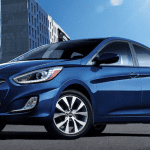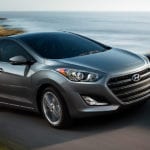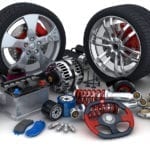In a head-to-head comparison between two similar vehicles, the devil’s in the details. Which one offers the best fuel economy rating? Is reliability a factor? Tech features like infotainment touchscreens and driver-assist safety technology can make or break your decision. Sometimes it boils down to styling. Aesthetically-driven buyers look for edgy, standout curb appeal and valet-ready luxury. Is one more universally appealing than the other? Take the 2021 Honda Passport vs 2021 Nissan Pathfinder: these two SUV veterans often show up on the same lists, and for good reason. They’re more similar than different, which means buyers need to do their homework before committing.
Let’s say you’re comparing the two as a final step before making a purchase. You get online and prepare to research each vehicle’s pricing, options, and specifications. Then you hit a wall because you discover that Nissan hasn’t released information on the 2021 Pathfinder. A little more digging reveals that it’s set for a full redesign in 2022, which means only minor updates for the 2021 model year. This information is coming from third-party automotive journalists and reads a lot like speculation. Nothing concrete is coming from Nissan directly. What happens next?
We expect the 2021 Pathfinder to echo the 2020 model in many respects, with a few interior changes, but for buyers (and for us), this ambiguity is frustrating. It begs the question – if a consumer is ready to buy and information about one of the vehicles on their list isn’t available, what are their options?
Unfortunately, automakers don’t always stick to a common schedule when it comes to launches, relaunches, and redesigns. It all adds up to confusion for the car-buying consumer. Without a shared timeline, there are information gaps. The Passport vs Pathfinder comparison is a perfect example. To help you navigate the in-between stages that often lead to confusion and a lack of data, we put together an overview of how automakers determine the stages of a vehicle’s lifecycle.
Vehicle Lifecycles
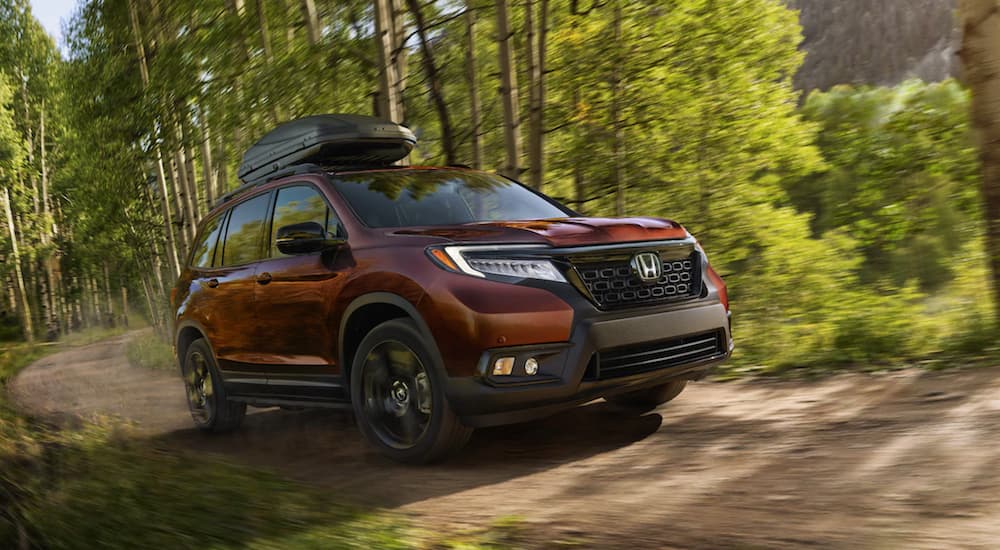
Let’s stick with the Passport vs Pathfinder. We know the Pathfinder is staying the same for 2021 because it’s slated for a complete redesign in the 2022 model year. At least we think we know. The buzz among automotive insiders is that Nissan is testing its 2022 prototype. In fact, Motor Authority reports sightings of a heavily-disguised 2022 Pathfinder around town. This is typical when an automaker is in the final stages of perfecting a new model or redesign. Sometimes we wonder if these “accidental” sightings are actually pre-planned. More on that later.
By comparison, the Passport was redesigned in 2019, so it’s early in the generational lifecycle. Putting the two side-by-side, the Passport wins for more advanced technology and design. How could it not? It’s a newer redesign. If you’re in the market for a 2021 mid-size SUV, you’ll want to ask yourself if you prefer the last year of a prior generation or the first few years of a new one. We’ll explain more about this later too.
Vehicle models evolve in stages, known in the industry as generations. The Honda Passport entered its third generation after receiving a complete rehab for the 2019 model year. That means its current design is less than five years old. We usually see a five to seven-year lifecycle for each design because technology advancements and consumer tastes dictate the need for a regular refresh. It’s not uncommon for some automakers to stretch it if it deems a specific generation timeless or sales reflect consumer acceptance. For instance, the current Toyota Tundra was first introduced for the 2007 model year and remains largely unchanged 15 years later.
Marketing
Automobile manufacturers put a lot of time and effort into vehicle launch campaigns. Nothing happens by accident, including prototype “sightings.” They heavily wrap vehicles in an attempt to conceal the fine details, then put them out on the track in full sight of journalists. This dance is designed to garner early interest and get ink time in automotive publications. Early adopters – people who are highly informed and waiting for the next best offering – are scanning for this information and will use it to position themselves first in line. From there, manufacturers expect these early adopters to spread the word to the public-at-large.
Teases like spy shots and ambiguous press releases are the first stage of a vehicle’s release. Next comes test vehicles to respected automotive reviewers, like Car and Driver, Edmunds, or MotorTrend. These sites exhaustively review the vehicle and report their findings. They’ll likely reach a broader audience than just early adopters, and thus begins the ‘buzz’ about a new or redesigned vehicle. Sometimes automakers wait to reveal new redesigns or concept cars at international auto shows, and sometimes these things happen concurrently, but the common thread is teasing the general public with well-placed rumors and fueling third-party speculation.
Once a vehicle is officially launched, it’s ready for production, and it appears on the automaker’s website. Dealers stock inventory and conduct local marketing efforts, and the vehicle officially enters its lifecycle as a year one launch. It is here when the success of early efforts is revealed. Is there a flood of interest? Has the vehicle impressed automotive journalists? This helps us understand if the automaker successfully stoked interest, created a built-up demand, and successfully sold the first round of inventory to hit dealerships. It also reveals whether the new vehicle is a hit or a miss.
Moving Forward: Old Gen or New Gen?
It’s important to research the lifecycle history of any vehicle you’re looking to buy in order to reveal several important facts that may impact your decision. First, you’ll find out where the vehicle is in its lifecycle. If it was recently redesigned (within two or three years), you will likely be buying the latest safety, infotainment, and performance technology. Older models may not get the benefit of these advancements, except on a cosmetic level. It takes a full redesign to incorporate core structural improvements. Second, it’s a potential negotiating advantage.
Returning to our example, the 2021 Honda Passport is entering the third year of its lifecycle while the 2021 Nissan Pathfinder has reached the ninth and final year of its lifecycle. It stands to reason that there may be more wiggle room on the price for the Pathfinder. Why? Most buyers are savvy enough to know that it is at the end of its lifecycle, and its impending redesign will impact current residual values. If you’re shopping for a price advantage, consider the Pathfinder over Passport. But, if you’re shopping for the latest advances in technology, safety features, and fuel economy, then the Honda Passport is the way to go.
One caveat: manufacturers regularly conduct mid-cycle refreshes, which are moderate redesigns, in an attempt to stay competitive in the category while developing a fully redesigned model. Usually, it means incorporating upgraded tech or minor exterior tweaks to freshen up the vehicle and have something to talk about each new model year. This can help keep a model fresh as the manufacturer takes the time needed to engineer a complete redesign. Committing to the vehicle throughout its lifecycle means balancing consumer demand with good fiscal responsibility. It’s a delicate balance. In the case of the Nissan Pathfinder, it received updates in both 2014 and 2017. However, that still means that even its most recent refresh dates back before the Honda Passport’s most recent redesign.
We know automakers seek to build cars that consumers want. We also know they’re constantly evolving and improving, especially when it comes to occupant safety. It’s reassuring to know that vehicle evolution reflects this commitment. While it can be frustrating to deal with an information vacuum, it’s good to keep in mind that there’s a method to their madness. Most importantly, there is a shared focus on keeping us safe. All the latest bells and whistles in the world won’t compare to the peace-of-mind that comes from knowing the vehicle you’re driving is a result of the manufacturer’s tireless efforts to keep you and your passengers as safe and secure as possible.
